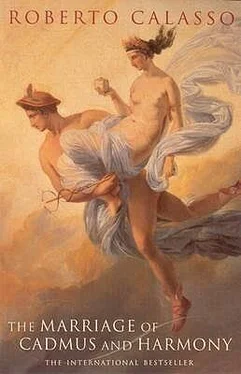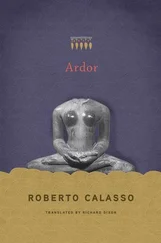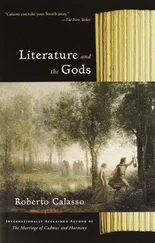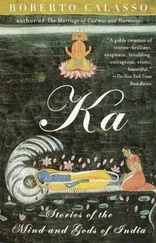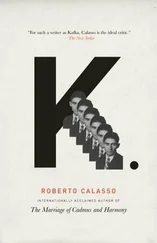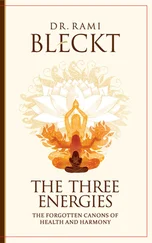Roberto Calasso - The Marriage of Cadmus and Harmony
Здесь есть возможность читать онлайн «Roberto Calasso - The Marriage of Cadmus and Harmony» весь текст электронной книги совершенно бесплатно (целиком полную версию без сокращений). В некоторых случаях можно слушать аудио, скачать через торрент в формате fb2 и присутствует краткое содержание. Год выпуска: 1993, Издательство: Alfred A. Knopf Inc, Жанр: Современная проза, на английском языке. Описание произведения, (предисловие) а так же отзывы посетителей доступны на портале библиотеки ЛибКат.
- Название:The Marriage of Cadmus and Harmony
- Автор:
- Издательство:Alfred A. Knopf Inc
- Жанр:
- Год:1993
- ISBN:нет данных
- Рейтинг книги:3 / 5. Голосов: 1
-
Избранное:Добавить в избранное
- Отзывы:
-
Ваша оценка:
- 60
- 1
- 2
- 3
- 4
- 5
The Marriage of Cadmus and Harmony: краткое содержание, описание и аннотация
Предлагаем к чтению аннотацию, описание, краткое содержание или предисловие (зависит от того, что написал сам автор книги «The Marriage of Cadmus and Harmony»). Если вы не нашли необходимую информацию о книге — напишите в комментариях, мы постараемся отыскать её.
The Marriage of Cadmus and Harmony — читать онлайн бесплатно полную книгу (весь текст) целиком
Ниже представлен текст книги, разбитый по страницам. Система сохранения места последней прочитанной страницы, позволяет с удобством читать онлайн бесплатно книгу «The Marriage of Cadmus and Harmony», без необходимости каждый раз заново искать на чём Вы остановились. Поставьте закладку, и сможете в любой момент перейти на страницу, на которой закончили чтение.
Интервал:
Закладка:
Hence Olympia came into being thanks to Alpheus. Hence the Master of Olympia placed a slim, muscular young man with prominent rib cage in a corner of the eastern pediment of the temple to Zeus, making Alpheus the first river to appear in a Greek temple. Hence in Olympia people sacrificed to Artemis and Alpheus on the same altar. Hence in the Middle Ages the waters of Alpheus shifted their course so as to submerge the stones and offerings of Olympia and protect it in their silt.
Alpheus was not a part of nature eager to become an affable allegorical figure, an old actor to be recycled one day in the lunettes of some Renaissance villa. No, Alpheus was that young man with the short hair and nervous spine depicted by the Master of Olympia, a man who would one day “transform himself into a river for love.” He was a hunter who one day decided to become nature. He was the only lover who, when his beloved turned to water, agreed to become water himself, without wanting to be held back by the boundaries of an identity. Thus he achieved a union no other man or woman had ever achieved, the union of two freshwater streams soon to plunge together into the sea. One eminent guarantor for the truth of the story of Alpheus was the oracle of Delphi, who celebrated the metamorphosis in some of her finest lines: “Somewhere, in the fog-bound plain of the sea, / Where Ortygia is, near Thrinakia, / Alpheus’s foaming mouth mingles / with the gushing spring of Arethusa.”
Alpheus and Arethusa: water with water, the spring that gushes from the earth, the current that rises from the depths of the sea, the meeting of two lymphs that have traveled far, the ultimate erotic convergence, perennial happiness, no bastions against the world, gurgling speech. Between the waves of the Ionian and those of the Alpheus, the difference lies in the taste, and perhaps a slight variation of color. Between the water of Arethusa and the water of Alpheus, the only difference is in the foam on Alpheus’s crest as he rises from the sea. But the taste is much the same: both come from Olympia.
The Greek activity par excellence was the shaping of molds. That’s why Plato was so intrigued by the modest craftsmen ( dēmiourgoí ) who plied this trade in Athens; that’s why he gave the name of their guild to the artificer of the whole world. In whatever walk of life, the Greeks were chiefly interested in shaping molds. They knew that, once made, those molds could be applied to an extremely wide range of materials. We think of the bourgeoisie as of something peculiarly modern, but when we describe it we are applying the mold of the mesótēs , which Aristotle developed in his Politics . When a company tries to impose a brand name, they are responding to a perception of the hierarchical supremacy of the týpos , the mold, over every other power.
The image that comes closest to the ideas of Plato is to be seen in the molds for fragments of the drapery of Phidias’s Zeus found in the sculptor’s studio in Olympia: the material is neutral and the same throughout, only the curves of the folds vary. In the end it is what is cast that survives. We live in a warehouse of casts that have lost their molds. In the beginning was the mold.
Mythical stories always lie at the foundation of something. But what they found can be either order or disorder. Greece split those stories up geographically with a sharp dividing line along the Gulf of Corinth. To the north, if we go back to the beginning, we find the slayers of monsters. Apollo for Delphi, Cadmus for Thebes, Theseus for Athens. And just as Apollo, model for all monster slayers, was also a musician and leader of the Muses, so Cadmus introduced the Phoenician alphabet into Greece, and Theseus brought together a few modest villages into a new entity, which from then on would be known as Athens. Common to all of them is the civilizing seal that stamps itself on an animal material.
South of the Gulf of Corinth that seal is nowhere to be found. The area was known as the Peloponnese, “the Isle of Pelops,” because many of its kingdoms dated back to a single man, Pelops. Some of those kingdoms, such as Mycenae, Argos, and Tiryns, could boast an ancient past and considerable power. Yet the story of Pelops and the Pelopides has nothing civilizing about it at all, except perhaps by accident. On the contrary, it lays the basis for an incurable disorder, a sequence of family vendettas, of curses that echo for generations, of actions that are repeated compulsively, of murderous treachery. It is the very karman between men and gods that surfaces here in all its tangled complexity. And it all began when a mortal invited the Olympians to dine at his table.
Pelops was son to a king of the immensely rich country of Lydia. The king’s name was Tantalus, and he often visited the gods. Tantalus talked a great deal, too much in fact. In his palace he would tell people about the nectar and ambrosia he had tasted on Olympus. Sometimes it seems he would steal a small amount and offer it around. He would also talk about the divine secrets he’d learned. When he was up in the heavens, he would say the wildest things, things that didn’t always please the Olympians. But Zeus went on being kind to him and inviting him. Some believe that Tantalus was his son.
One day Tantalus decided that he would like to invite the Olympians to his place. Pelops was scarcely more than a boy then. He watched a big bronze pot being prepared and put on the fire. Then he remembered hands tearing him limb from limb, but he didn’t lose consciousness. Now the gods were sitting around the bronze pot where the dismembered little Pelops was simmering away. Tantalus offered the gods the delicious food he had prepared for them. They all fell silent; the meat stayed where it was on their plates. Only Demeter, wrapped in thought, dazed and distracted as she had been ever since her daughter Kore disappeared, picked up a piece of meat and ate it. It was Pelops’s shoulder blade. Immediately afterward, Zeus unleashes his fury. All the kindnesses he had hitherto heaped on Tantalus were transformed into atrocious punishments. The other gods still sat silently in front of their plates. Zeus ordered Hermes to collect all the pieces of Pelops’s body. He must put them in the pot and bring them to the boil again. Then Clotho, one of the Moirai, the Fates, took them out one by one and began to sew them together as if she were mending a doll. But there was still the big hole in his back. So Demeter fashioned a shoulder blade of ivory. Rhea breathed life into Pelops. Now the boy was alive, whole and radiant. Pan was so happy he danced around him. Poseidon was dazzled by Pelops’s beauty and promptly decided to abduct him. On a chariot drawn by golden horses, he fled to Olympus with the boy. He wanted Pelops to be his lover and his cupbearer.
Having lived — we don’t know how long — with Poseidon, Pelops found himself king of his father’s lands. Soon the neighboring peoples were harassing him with their attacks. Pelops decided to cross the sea with his men and his treasure in search of a woman. He would go and present himself to a distant princess, in the part of Greece that looked westward: the girl was Hippodameia, daughter of Oenomaus.
Around the gateway to Oenomaus’s palace on Kronos hill in Olympia, thirteen human heads had been nailed. Pelops crossed the threshold as a foreigner and the fourteenth suitor to Hippodameia. He was told that Oenomaus planned to collect a few more heads before bringing them all together in a temple dedicated to his father, Ares. The king of Olympia was obsessed by two violent passions: his horses and his daughter, Hippodameia. Both were protected by a law. No mules must be born in Elis. Whoever mated an ass with a mare would be put to death. Hippodameia’s suitors had to try to beat the magic horses of Oenomaus, a gift from Ares. Oenomaus thought of these foreign kings as inferior beasts who wanted to defile his magnificent mare Hippodameia by generating a bastard child on her. His horses and his daughter, “subduer of horses,” formed a ring. One half circle was continued in the other. In bed sometimes, he would see a white mare’s head pop up from under the covers, and it was his daughter.
Читать дальшеИнтервал:
Закладка:
Похожие книги на «The Marriage of Cadmus and Harmony»
Представляем Вашему вниманию похожие книги на «The Marriage of Cadmus and Harmony» списком для выбора. Мы отобрали схожую по названию и смыслу литературу в надежде предоставить читателям больше вариантов отыскать новые, интересные, ещё непрочитанные произведения.
Обсуждение, отзывы о книге «The Marriage of Cadmus and Harmony» и просто собственные мнения читателей. Оставьте ваши комментарии, напишите, что Вы думаете о произведении, его смысле или главных героях. Укажите что конкретно понравилось, а что нет, и почему Вы так считаете.
